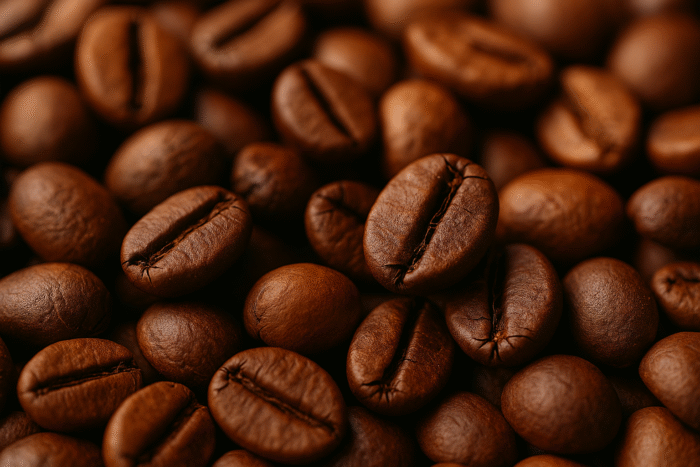Dubai, 21 August 2025 (Qahwa World) – Coffee prices continued their sharp rally this week, reaching multi-month highs as drought in Brazil, tighter U.S. supplies, and falling inventories combined to fuel bullish sentiment in global markets. September arabica coffee (KCU25) closed up +4.05 cents (+1.14%), while September robusta coffee (RMU25) jumped +236 points (+5.35%), marking the strongest levels for arabica in more than two months and for robusta in two and a half months. The upward trend has now extended for over two weeks, signaling growing concerns among traders and roasters alike.
Much of the momentum is driven by weather conditions in Brazil, the world’s largest producer. Somar Meteorologia reported that Minas Gerais, the country’s main arabica-growing state, received no rainfall during the week ending August 16. Dry conditions at this stage of the harvest have spurred funds and speculators to increase their positions in coffee futures. While dryness helps in harvesting ripe cherries, prolonged lack of rain threatens the health of trees and could affect the next cycle’s yield, especially for arabica, which is more sensitive to climatic stress.
Aynı zamanda, en büyük kahve ithalatçılarından biri olan Amerika Birleşik Devletleri de kendi arz sıkıntısıyla karşı karşıya. Brezilya'nın kahve ihracatına %50 gümrük vergisi getirmesinin ardından Amerikalı alıcılar yeni sözleşmeler yapmaktan kaçınıyor ve yüksek vergilerden kaçmak için mevcut sözleşmelerde boşluklar arıyor. Hatta bazıları ticari kısıtlamaların eninde sonunda hafifleyeceği umuduyla nakliye sürelerinin uzatılmasını talep etti. ABD'de tüketilen kavrulmamış kahvenin yaklaşık üçte biri normalde Brezilya'dan temin edildiğinden, gümrük vergileri piyasayı önemli ölçüde daralttı.
Export figures from Brazil reinforce the tightening picture. The country’s Trade Ministry reported that unroasted exports in July dropped -20.4% year on year to 161,000 metric tons, while Cecafé, the exporters’ council, confirmed that green coffee exports fell -28% to 2.4 million bags. Within that total, arabica shipments declined -21% and robusta plunged nearly -49%. Overall, Brazil’s coffee exports in July fell to 2.7 million bags, and shipments for the first seven months of the year were down -21% to 22.2 million bags compared to the same period in 2024.
Fiyatlara bir diğer destek de Intercontinental Exchange'de (ICE) azalan stoklardan geliyor. Arabica stokları hafif bir artış göstermeden önce geçen hafta 726.661 torba ile son 1,25 yılın en düşük seviyesine gerilerken, robusta stokları 6.732 lot ile üç haftanın en düşük seviyesine indi ve Temmuz sonunda ulaşılan iki yılın en yüksek seviyesinin hala oldukça altında.
Even as supply pressures mount, Brazil’s harvest progress offers a short-term counterbalance. Cooxupé, the country’s largest cooperative and exporter, announced that its members had harvested 86.1% of their crop by August 15. Independent consultancy Safras & Mercado placed national progress at 94% complete, with nearly all robusta and more than 90% of arabica cherries already picked. This suggests that near-term supply will remain steady, though the longer-term outlook is clouded by weather concerns.
Globally, the International Coffee Organization (ICO) reported that exports in June rose +7.3% year on year to 11.69 million bags, though cumulative shipments for October through June were nearly flat at 104.14 million bags, down -0.2% compared to the previous year. Meanwhile, in Vietnam, the world’s largest robusta producer, production in 2023/24 fell -20% to 1.472 million metric tons, the smallest harvest in four years, due to severe drought. Exports for 2024 slipped -17.1% to 1.35 million metric tons, and the Vietnam Coffee and Cocoa Association has already cut its production forecast for 2024/25 to 26.5 million bags, down from an earlier estimate of 28 million. Yet, despite these challenges, Vietnam’s exports in the first seven months of 2025 rose +6.9% to 1.05 million metric tons, providing some temporary relief to the international market.
Looking ahead, projections from the U.S. Department of Agriculture’s Foreign Agricultural Service (FAS) suggest that world coffee production in 2025/26 will increase +2.5% year on year to a record 178.68 million bags. Arabica output is expected to fall -1.7% to 97.02 million bags, while robusta is forecast to rise +7.9% to 81.65 million bags. Brazil is projected to produce 65 million bags (+0.5%), and Vietnam is forecast to reach a four-year high of 31 million bags (+6.9%). Ending stocks are expected to climb by nearly +4.9% to 22.82 million bags. Still, major trader Volcafe has warned of a widening deficit in arabica, projecting a shortfall of -8.5 million bags for 2025/26, compared with -5.5 million bags this year. If accurate, this would mark the fifth consecutive year of arabica deficits, ensuring that upward pressure on prices will likely persist well into next year.
The post Coffee Prices Surge on Dry Weather in Brazil and Tighter U.S. Supplies appeared first on Qahwa World.




